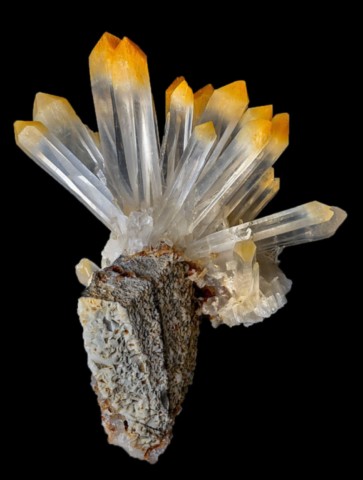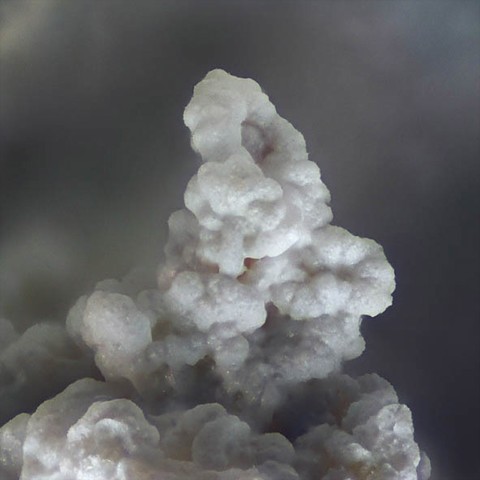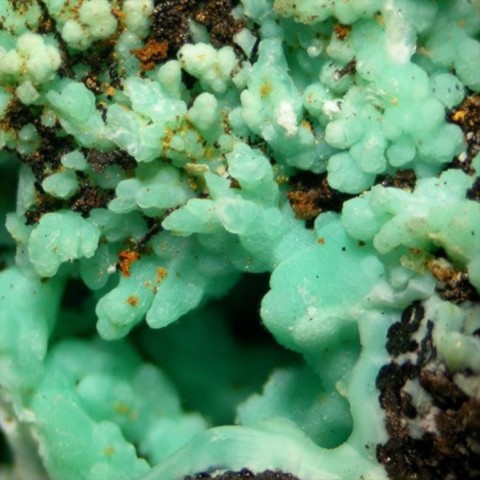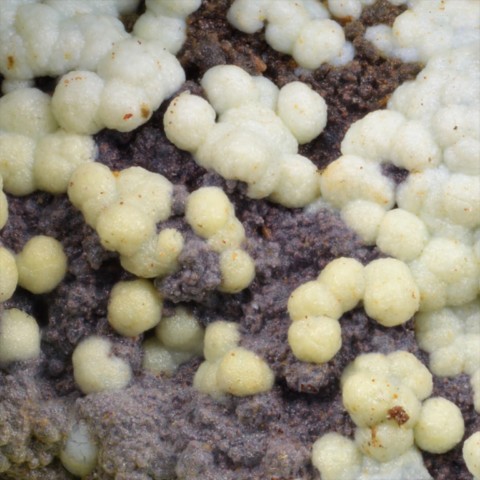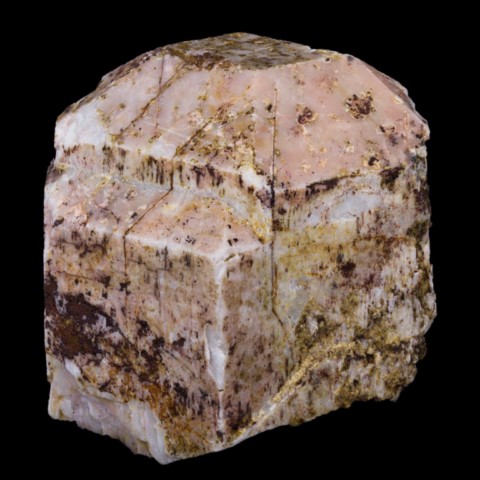 Halloysite - Encyclopedia
Halloysite - Encyclopedia
Class : Silicates
Subclass : Phyllosilicates
Crystal system : Monoclinic
Chemistry : Al2Si2O5(OH)4
Rarity : Very common
Halloysite is a clay mineral from the kaolinite group ; it is a product of hydrothermal alteration of feldspars and other aluminum silicates, a hydrated form of kaolinite. It was named in honor of the Belgian geologist, Baron Omalius d'Halloy who was the first to study the mineral. Halloysite occurs in compact earthy collomorphic masses with conchoidal fracture or in small spherules, white, gray, brown, yellow, blue, green or red, catching on the tongue. Halloysite is frequently associated with kaolinite from which it sometimes seems to be derived by the action of sulfate solutions. It has a wide range of uses : in the ceramic and rubber industries as well as in the chemical industry for the manufacture of ion exchange materials, saponifiers and degreasers.
Main photo : Quartz with halloysite inclusions (Mango quartz) from Cabiche, Quípama, Boyacá, Colombia © David Ethan Ziga
Halloysite in the World
Twinning
No twin known for this mineral species. Halloysite can, on the other hand, completely replace (pseudomorph) other minerals, thus crystals of topaz replaced into halloysite are known at Varuträsk (Sweden).
Fakes and treatments
No fakes recorded for this mineral species.
Hardness : 1 to 2
Density : 2 to 2.65
Fracture : Conchoidal
Streak : White
TP : Translucent to opaque
RI : 1.553 to 1.570
Birefringence : 0.007
Optical character : Biaxial
Pleochroism : None
Fluorescence : None
Solubility : Acids
Magnetism : NoneRadioactivity : None

